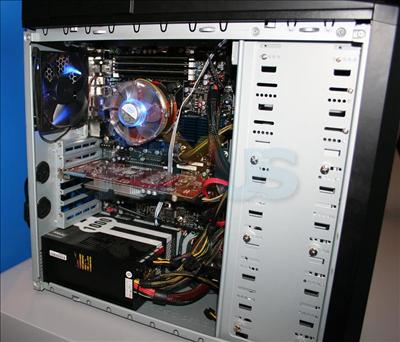Intel's recent introduction of Core i5 and Core i7 chips, based on the
Lynnfield architecture, has been met with general acclaim. Essentially
a scaled-down version of the Bloomfield core that constitutes the
9xx-series of Core i7 chips, Lynnfield sales will make up the majority
of mid-priced PC sales in 2010, we reckon.
Mainstream appeal is attractive as it brings in the bulk of the
revenue, but a halo product does much for a company's image, especially
with enthusiasts.
Whipping out the client
roadmap for 2009 and
2010, we see that Intel plans on releasing a high-end desktop chip
known as Gulftown.

We
saw a fully-working Gulftown system at this year's IDF. For those that
need a little reminder, Gulftown is a 32nm-based chip that uses the
Westmere architecture. The smaller, more-power-efficient process
enables Intel to increase the core count from a four execution units to
six whilst remaining within the 130W TDP. The hexa-core Gulftown is
otherwise identical to present quad-core Bloomfield (Core i7 9xx),
although Intel is rather coy in explaining the chip's supporting cache
arrangement. Our bet is on 12MB of shard L3.
Intel's representatives stated that a BIOS update is all that is needed
to ensure Gulftown operation on current LGA1366-based X58 chipsets.
The six-core, 12-threaded CPU will do core-to-core battle against AMD's
also-six-core
Thuban
chip, to be released in
2010. Perhaps more relevant to the workstation market, we're keen to
see who buys Gulftown, 'cause it ain't going to be cheap. Would you buy
a
six-core
chip? We'd love to hear your thoughts in the HEXUS.community.








